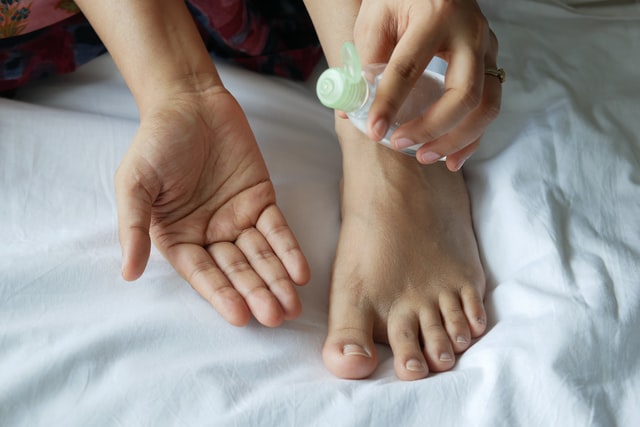What Can Go Wrong With Your Feet as You Age?

From the moment you take your first steps, your feet take you a lot of places. But because they’re just there when you need them, it’s easy to forget that, just like the rest of your body, there are many ways that aging can affect your feet.
Some of the changes are subtle. Others are more noticeable. From common ailments to bigger issues, here are a few common foot problems as you get older.
Fat pad atrophy
With age, it’s fairly typical to see a loss of padding in the feet. As older adults lose this cushioned layer, the first signs of fat pad atrophy come in the form of foot pain along the foot and heel. Fortunately, a lot of this discomfort can be alleviated by wearing shoes with cushioning, or even foam shoe inserts. In some cases, your doctor may suggest filler injections to replace lost padding.
Cracked heels
Dry skin can be unpleasant, but without regular care, cracked heels can harden and hurt. There are special creams and moisturizing lotions available to help remove the tough top layer of skin, and a pumice stone can remove dead skin. Your doctor, especially if you have a podiatry specialist, may recommend a prescription ointment to help your condition.
Ingrown toenails
When the side of a nail grows into the skin, it’s known as an ingrown toenail. It can lead to swelling, pain and even an infection or nail root removal if it’s not treated properly. Often found on the big toe, this condition can happen at any age, although it’s commonly seen on elderly feet. To help prevent an ingrown toenail, try not to cut your toenails too short and steer clear of tight-fitting shoes.
Osteoarthritis
With age, the cartilage surrounding the bones in your feet breaks down. This results in bone rubbing against bone, which as you can imagine, causes foot pain. Osteoarthritis, as it’s known, usually affects people over the age of 65.
Flat foot
You may associate being flat-footed with babies – but a large majority of infants outgrow the condition. As you get older, you run the risk of developing flat feet, often due to an injury or condition like diabetes or obesity. Although it causes pain, there are several treatment options available, including orthotics, physical therapy, braces and surgery.
Diabetic foot ulcer
When you have diabetes, you may suffer nerve damage, causing you to lose your ability to feel minor cuts, scrapes and wounds. Sometimes, but not always, it can cause your feet to tingle or have a numb sensation. Those with diabetes run the risk of contracting a diabetic foot ulcer, a sore that might start small. It’s a serious condition, and it could even be cause for amputation if it has an opportunity to grow or get infected. If you have diabetes, be sure to keep your blood sugar in check and regularly lookout for these ulcers. Seek medical attention immediately if you notice anything concerning.
Gout
Gout is a form of arthritis, commonly seen in middle-aged men. It causes swelling, as well as stiffness and pain, as waste (called uric acid) gathers in the big toe. With prescribed medicine, you can get the swelling to go down and begin to feel better within a day or two. Diet changes, drinking more water and exercising can help prevent a reoccurrence.
Bunions
Bunions, which are painful lumps along the inside of your foot, are most often seen in women. Tight and narrow shoes – think high heels – are often the culprit. While serious cases may require surgery, most bunions can be relieved through ice treatment, special pads and comfortable, roomy shoes.
Hammertoe
Usually occurring in your second toe, next to the big toe, a hammertoe appears as a bend along the middle joint. The first thing you’ll notice is typically the peculiar shape. It might hurt when you apply pressure, or it might be surrounded by corns and calluses from shoe friction. Common treatments for hammertoe include special footwear, pain relievers and, in severe cases, surgery.
Stress fractures
As women experience menopause, there are hormonal changes that can lower bone density throughout the body – a condition known as osteoporosis. Of course, this includes the bones in your toes and feet, which could result in stress fractures. Your best bet to avoid fractured bones from osteoporosis is to keep your bones strong through diet and exercise, but medication can also help.
If you’re wondering what to do to prevent the most common foot problems in aging adults, a geriatrician or your doctor can help. Fortunately, many of these conditions and others affecting the foot can be minimized or alleviated with a few minutes of sole health on a regular basis.
